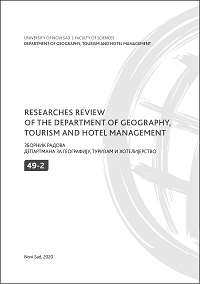DEVELOPMENT OF URBANIZATION OF THE KOREAN PENINSULA DURING THE JAPANESE COLONIAL RULE (1910-1945)
DEVELOPMENT OF URBANIZATION OF THE KOREAN PENINSULA DURING THE JAPANESE COLONIAL RULE (1910-1945)
Author(s): Zorica Pogrmić, Bojan Đerčan, Dajana BjelajacSubject(s): Human Geography, Local History / Microhistory, Social development, Rural and urban sociology
Published by: Prirodno-matematički fakultet, Univerzitet u Novom Sadu
Keywords: Korean Peninsula; colonization; urban planning; urban development; Seoul
Summary/Abstract: The urban approach to urban planning during Japanese colonization (1910-1945) boils down to the dimension of colonial rule and exploitation of the Korean Peninsula. Japanese imperialism has left positive and negative aspects on cities on the Korean Peninsula. Positive aspects are the introduction of modern urban planning and the development of industrialization. In addition to the modernization and growth of the Korean economy, the development of urbanization also took place by establishing the so-called “North Korean city routes”. Focusing on officials from the Japanese Ministry of Construction and the financial potential of Korea, ways have been devised to establish an urban plan for the peninsula. The Japanese regulation on urban planning introduces a zoning system (1934). From 1910-1945 the growth of the urbanization of the capital Seoul was influenced by the Japanese colonial administration, becoming the first Korean city of millions.
Journal: Zbornik radova Departmana za geografiju, turizam i hotelijerstvo
- Issue Year: 49/2020
- Issue No: 2
- Page Range: 150-162
- Page Count: 13
- Language: English

